Public contracting authorities are generally subject to a tendering obligation. When awarding contracts for IT services, public-sector clients (and also private-sector awarding authorities) must observe a number of special features. On the one hand, all technical requirements must be known and documented, and at the same time the constantly changing regulations of the EU must be observed. Errors in the tender documents can jeopardize the entire project and possibly bring the wrong partner on board. Against this background, a structured tendering and selection process is essential. IT service providers are repeatedly faced with the problem that public tenders are published with incomplete specifications. Answers to technical queries from the tendering party are often difficult to obtain. As a result, providers find it difficult to properly determine effort and cost calculations. The risk of a misjudgment increases. Inaccurate quotes can cause unpleasant discrepancies during the project.
1. first, project leaders and project teams should be defined. Before tendering, it is useful to inform all stakeholders who are needed on the project. Offerors are advised to identify award teams, negotiation teams, and an evaluation committee prior to issuing the RFP. Already here, a rough time frame for the project should be determined. For subsequent bidders ask must be appointed contact person.

2. First Steps: Good Preparation and Specifications
At the beginning of each tender is the determination and analysis of the needs. The tendering party must work with its IT department to determine exactly what is needed and, if necessary, where service is required. The more concretely the service description is formulated, the more error-free the project will be later on. For a project to be successful, clearly understandable and binding goals must be defined for each phase of the project to guide bidders. In the service description, short and non-nested sentences should be used and phrases such as “etc”, “e.g.” should be avoided. Such formulations describe an “upwardly open scope of services” and lead to unclear service descriptions. For public-law clients, the “Unterlage für Ausschreibung und Bewertung (UfAB)” (document for tender and evaluation) is available as a template for the tender.

3. Determination of Evaluation Criteria
In order to find the economically best offer based on the price-performance ratio, precise award criteria and award procedures must be defined in advance. To ensure equal opportunities, the weighting of the evaluation categories must be transparent and clearly visible to all. The evaluation tools must make it possible to understand at any time exactly why a decision was made in favor of a provider. A classic evaluation matrix with exclusion and evaluation criteria is widely used here. Criteria are usually formulated as questions to providers and have different weightings. Such evaluation procedures include, for example, price, quality, service or support with response times.

4. Take a Close Look at Providers
A certain quality level of the providers can already be required in the invitations to tender. For example, the ISO 9001 quality certificate can be specified in advance as a suitability requirement. In order to compare products and services, presentation appointments should be scheduled with all qualified vendors as a preliminary step to official bidding. When obtaining references, make sure that they contain objective information that is precisely geared to your own needs and requirements and, ideally, that they come from the same industry. The public procurement law in § 45 VgV also provides that economic and financial key figures such as sales or balance sheets may be requested. But be careful: recognizing the financial performance of a company only on the basis of the income statement or the annual financial statements is very difficult and requires advanced business knowledge.
5. Supplementary Terms of Contract for the Procurement of It Services
There is a special form of supplementary contract terms for public IT projects: “Supplementary Contract Terms” for the Procurement of IT Services (EVB-IT). These regulate the framework conditions for contractors in the IT sector. The EVB-IT is divided into several sections. There are currently ten different EVB IT contract types. The German Federal Government for Information Technology (CIO-Bund) in turn divides these contract types into basic EVB-IT and system EVB-IT.
Basic contracts: (B)
(B) EVB-IT Service: e.g., training, consulting or other support services.
EVB-IT Maintenance: Creation or adaptation of software on the basis of a contract for work and services and, optionally, subsequent maintenance.
(B) EVB-IT Purchase: to be applied in the case of contracts for the purchase of hardware, including, where applicable, the provision of standard software in return for a one-off payment for indefinite use.
(B) EVB-IT Pflege S: are designed for the conclusion of contracts which have software maintenance services for standard software as their object.
(B) EVB-IT Transfer Typ A: Provision of standard software against a one-time fee for use for an indefinite period.
(B) EVB-IT Transfer Type B: Transfer of standard software against periodic remuneration for limited use.
System contracts: (S)
(S) EVB-IT System: Creation of an overall IT system consisting of hardware and software.
(S) EVB-IT System Delivery: Delivery of IT systems from standard components
If you have problems preparing your tender documents correctly and in compliance with the law, our experts will be happy to help. Simply contact us by phone or schedule a free consultation at:


